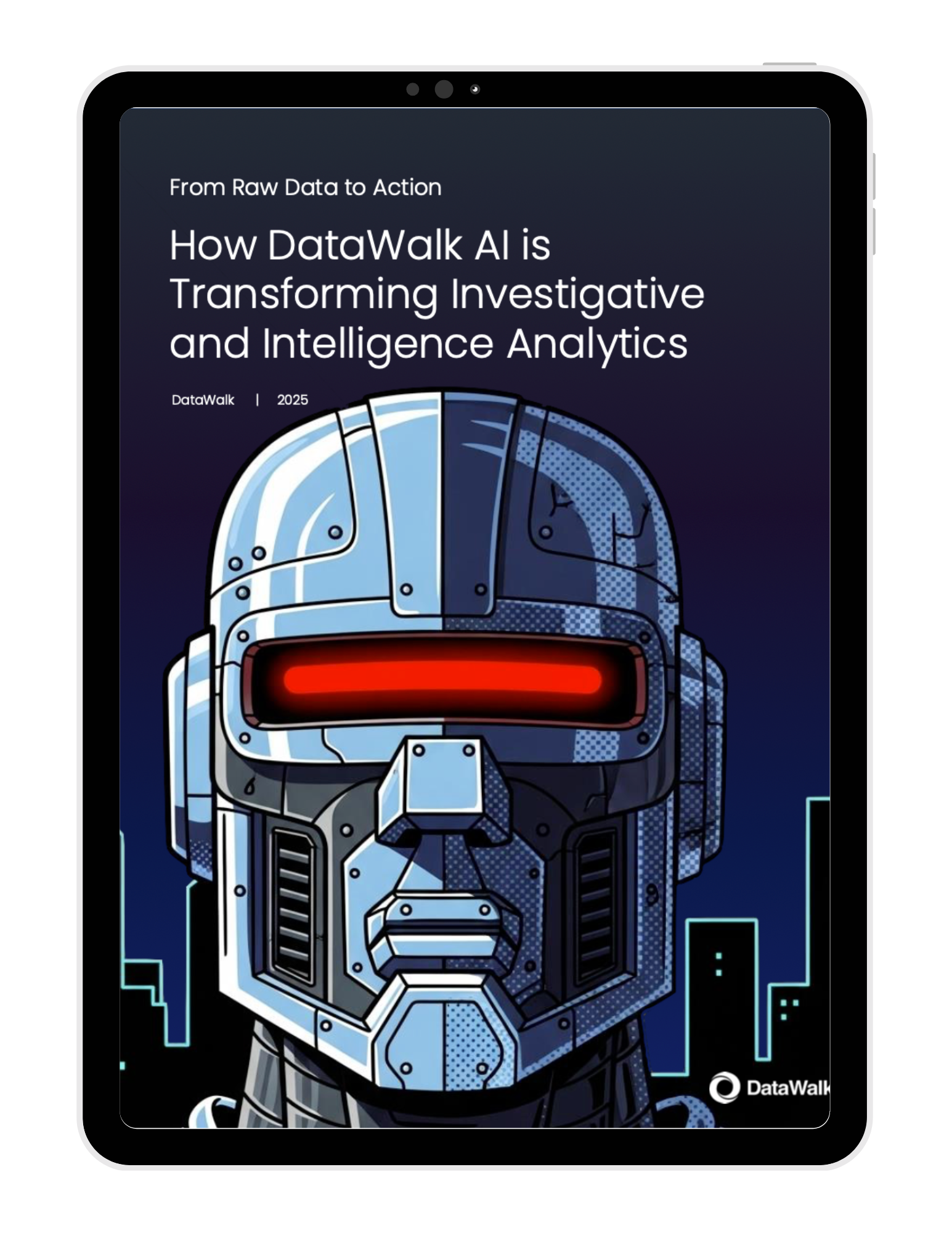
Cracking a $5.7M Fraud
in 120 Minutes
The Power of Agile Investigation With DataWalkContext
and Results
A Fortune 500 company used the DataWalk platform to turn an unsolved four week fraud investigation into a two-hour resolution. Within their own data, the complex investigation team found definitive proof that merchants had used illicit methods, leading to a $5.7 million fraud case
The Challenge:
An Unsolved
Fraud Case
For four weeks, the company's investigation team had been working on a complex fraud case without success. Despite having access to extensive case data - multiple SQL database exports and over 20 CSV spreadsheets with 30+ columns each - they couldn't connect the widely disjointed dots needed to find the fraudulent merchants.
The issue: The investigators had the expertise and the raw information, but lacked technology to integrate, visualize, and explore the relationships hidden within their data. There was no intuitive way to investigate hypotheses about the fraud’s root cause.
The Solution:
An Impromptu Test of DataWalk’s Enterprise Investigative Agility

During a workshop with DataWalk, the company’s investigators witnessed a demonstration of the platform’s capabilities. Intrigued, they proposed an on-the-spot challenge: could DataWalk help resolve their four-week unsolved fraud case where traditional tools and methods had failed?
The investigators shared their PII-redacted data—spanning SQL exports and over 20 CSV files—with the DataWalk team. In just five hours, the team built a ready-to-analyze ontology and knowledge graph that unified thousands of disparate data points into a single contextual view. This included entity resolution to match related entities across sources and ad-hoc data integration to allow on-the-fly ingestion of new information without disrupting workflows.
On the second day, investigators began exploring this unified data environment using no-code visual querying, search functionality, and graph algorithms such as shortest path analysis to map connections. They utilized link analysis to expose hidden relationships, ran aggregations to sum transactions and analyze temporal patterns, and tested a dozen investigative hypotheses—all without any coding or IT assistance.
When new context was needed, an additional CSV file was seamlessly integrated into the model within minutes. This real-time adaptability, paired with AI-driven discovery of blind-spot relationships, revealed a previously invisible fraud pattern. Within just two hours, the team uncovered the fraudulent merchants responsible for the $3 million fraud—successfully resolving a case that had eluded resolution for weeks.

Learn More About DataWalk Entity Resolution
How DataWalk Made
the Difference
The resolution of this case wasn't about applying more resources, it was about enterprise investigative agility - applying the right technology with the right capabilities fast.
Data Integration
and Unified View
The DataWalk team quickly built a comprehensive ontology and knowledge graph that connected previously siloed information, eliminating information barriers and allowing investigators to visually explore connections across all data sources simultaneously.
Advanced Analysis
with No Technical
Barriers
Without specialized technical skills, investigators seamlessly used various analytical methods - applying graph algorithms to uncover hidden connections, analytical aggregations of values for multidimensional insights, leveraging graph algorithms, and visualizing results immediately.
This analytical versatility allowed investigators to directly explore the data and approach the problem from multiple angles.
Fast Adaption
and Prototyping
When new questions arose, DataWalk's flexibility allowed for immediate exploration without disrupting the investigation flow. The platform's prototyping capabilities enabled the team to test new hypotheses quickly, link data from multiple sources in real-time, and discover previously unknown relationships between entities.
For financial institutions and other organizations dealing with complex investigations, DataWalk's approach offers a new paradigm. Rather than treating data analysis as a technical exercise separate from business operations, it becomes an agile enterprise process for investigators.

“The new paradigm”

Join the next generation of data-driven investigations:
Discover how your team can turn complexity into clarity fast.

Solutions
Product
Partners
Company
Resources
Quick Links


